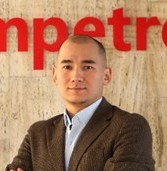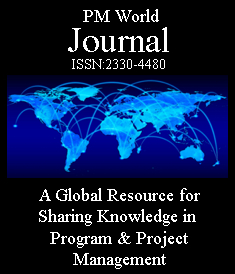Improved by Application of Critical Path
Method and Agile Principles
CASE STUDY / LESSONS LEARNED
By Nursultan Sitmagambetov, MSc in PM, CAPM
Astana, Kazakhstan
Constanta, Romania
Introduction
Rig mobilization (field-to-field) and rig move (well-to-well) projects should not be underestimated and viewed as simple operational logistics tasks because they are actually complex high-stakes projects that need rigorous project management. Drilling rig moves in upstream oil and gas environments require the coordination of hundreds of activities and strict compliance rules and interdependent resources in remote constrained locations under tight time constraints. Delays in operations lead to non-productive time (NPT), elevated costs and production losses.
The article presents project management insights derived from field experience at one of the world’s biggest integrated upstream onshore developments for executing land rig mobilizations and moves within difficult sites. The combination of traditional Critical Path Method (CPM) with adaptive Agile-inspired practices helps improve execution speed, coordination and safety during rig moves.
Understanding Rig Mobilization Projects
The planning of drilling rig mobilization/move projects appears simple on paper, yet they involve complex procedures including rig-down, transportation, rig-up, site preparation and final acceptance. The practical implementation of such projects resembles a multi-phase capital project which requires execution within a short period of days. The project sequence demands over 300 distinct activities from equipment nipple-down and logistics coordination to utility tie-ins and functional testing because these activities need precise sequential coordination.
The complexity of these operations increases because of multiple factors:
-
- Geographic dispersion of support yards, camps and rig sites.
- Permit dependencies and cross-discipline inspections.
- Workforce handoffs between mechanical, electrical and well services teams.
- Environmental factors – including weather and access constraints.
On top of that, any single mistake such as delayed permits, equipment malfunctioning or missing trailers produces sequential impact on the entire project sequence.
Applying Project Management Techniques
CPM and WBS
A drilling rig mobilization/move project needs more than operational efficiency to succeed because it requires project management with structured proactive practices. The integration of traditional scheduling methods with Agile-inspired execution techniques resulted in better project performance in terms of speed, coordination and adaptability based on our field experience.
Our planning strategy used CPM as its fundamental structure. The activity network from rig-down and transport to pad preparation, rig-up, commissioning and handover enabled us to determine the critical path and identify tasks with float time. This enabled project leaders to gain clarity about resource priorities and bottleneck prevention along with direct decision-making focus on activities that influenced total move duration.
More…
To read entire article, click here
How to cite this article: Sitmagambetov, N. (2025). Drilling Rig Mobilization/Move Projects Improved by Application of Critical Path Method and Agile Principles, PM World Journal, Vol. XIV, Issue VI, June. Available online at https://pmworldlibrary.net/wp-content/uploads/2025/06/pmwj153-Jun2025-Sitmagambetov-drilling-rig-mobilization-case-study.pdf
About the Author

Nursultan Sitmagambetov
Astana, Kazakhstan
Constanta, Romania
![]()
Mr. Nursultan Sitmagambetov holds an MSc in Project Management and Innovation from the University of Strathclyde in Glasgow, UK, and a BEng in Petroleum Engineering from the University of Aberdeen. He is a project management professional with ten years of experience in both the upstream and downstream sectors of the oil and gas industry. Currently, he is the Deputy Director of the Project Management Department at Rompetrol in Constanța, Romania, where he is accountable for a portfolio of capital growth and asset integrity projects.
Mr. Sitmagambetov started his career in drilling operations, then moved into project roles of increasing responsibility. His multidisciplinary background and international education have positioned him well to lead complex, high-impact initiatives. In addition to his professional responsibilities, he is an active member of the PMI Romania Chapter, where he contributes to the global project management community as a mentor and reviewer.
Nursultan can be contacted at NSitmagambetov@pmiqaz.org









